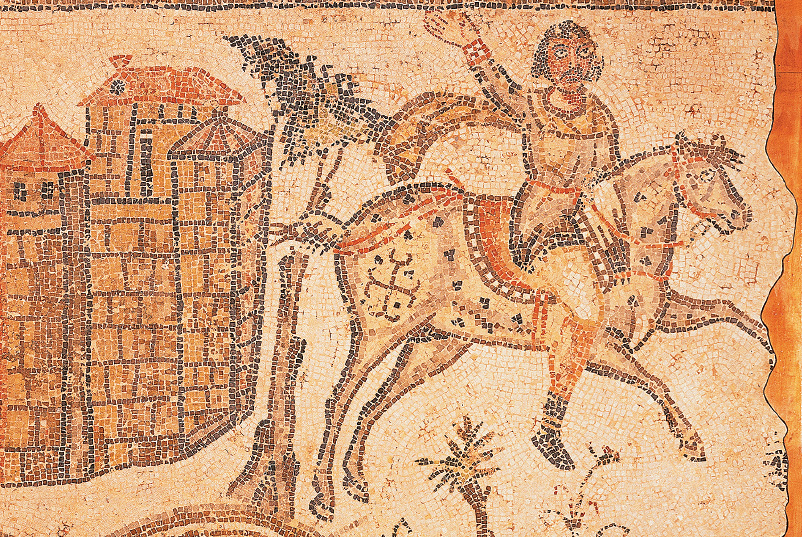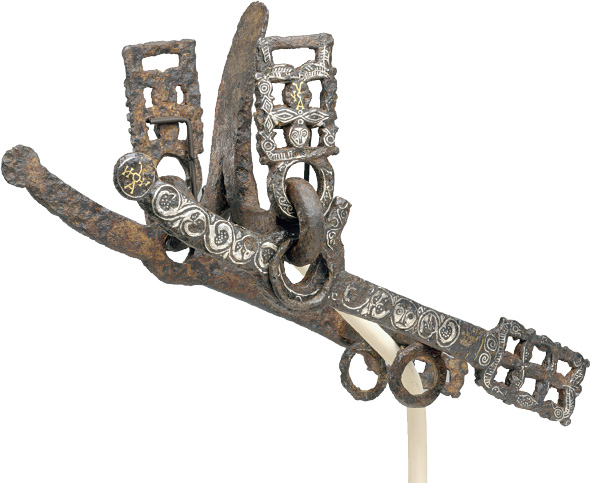Living in the Past: The Horses of Spain

Horses were first domesticated around 4000 B.C.E. in Central Asia, probably initially for their meat, but soon afterward for transportation and warfare. By 2000 B.C.E. warriors’ graves in what is now southern Russia contained full-size wood and metal chariots and the skeletons of the horses that pulled them. Paintings from Egypt and Mesopotamia show warriors shooting arrows from horse-drawn chariots. Saddles and stirrups, which allow riders to sit securely on a horse’s back, were developed much later, probably in India or Central Asia. By 200 C.E. mounted archers were an important part of the barbarian armies, both Germanic and Central Asian, that threatened the Roman Empire. The Romans also used horses, and bred them selectively for speed and sturdiness. Owners of large villas ran horse-breeding operations, supplying the Roman army with horses as they supplied the cities with grain.
All of these uses of the horse came together in the Iberian Peninsula, an area the Romans termed Hispania: the Romans raised horses there, and the Vandals and Suevi (two Germanic tribes) and the Alans (a Central Asian steppe people) conquered the area with horses in the fifth century. Later in that century the Visigoths (another Germanic tribe) took over much of the peninsula in campaigns where their skill with horses proved a decisive factor. This would be true for the next conquest of Spain as well, by Muslims in the eighth century, whose Arabian horses — bred for endurance, speed, and intelligence — had allowed them to sweep swiftly across North Africa.
Horses were a weapon of war, but they were also a place to display artistic skill and cultural values. Metal ornaments for horse harnesses are among the relatively few Visigothic artifacts that have survived, providing a glimpse of an early version of the horse culture that Spanish conquerors brought to the New World in the sixteenth century and that still remains important in Spain.


QUESTIONS FOR ANALYSIS
Question
5AGyUU8/X+SO8gc9q+0jPdRgZQNL9KYXuN3li+f07udltnY80ZH5kcodWCsqCHM7w0AXXFayImZShHMamt/vFUCRiTrBVJb9k2wYtmNAXjPXDl9G9L0WtQz5a5vB9G6sLMc8/1kBeqLoSScDruFFt0uMe9bxDZvMDkqSozoEQ9GDG5pKIbi4/jfn2iuBh26UbSErdZuLH0gDJ2HOJR9rNtGDY8qBRYhTFwYvNI3sILE=Question
JHSmPT20Mq8IyDJFbenEGWKRjhnxpq9czZ6CHPqP+rNZ/q/+aCHK1YXNfEjVR/ekS1d48xedHAc3rfiATYqFCBJmwCyQcDd81T/2DU9K4Dvjhbb+TtuhbCwELpqz7OVpyRpkUuy0rYhyDFWALaq6qs7hEQkyM/3EvOWEO2xFjoQvBjsT04Hxr4KZqXc041KXQuestion
WYdKgxp68DF8iX1aE3fFT2a/RQwQa3NgkbbLqX+j30YVaIQ8pmNOaaBuzxupAEBJqkN6g+uBPrB0Jm9SOQxDIwTCoE9+JpKaS4bqe7JO1mNC8UTAsboTODTjt3n6WZrgveH6/30qZ6D9Dn4Gg4joAql3++6DnItf2DIr6msubcsxDOwg4/QhD1KCC3gt4Oej